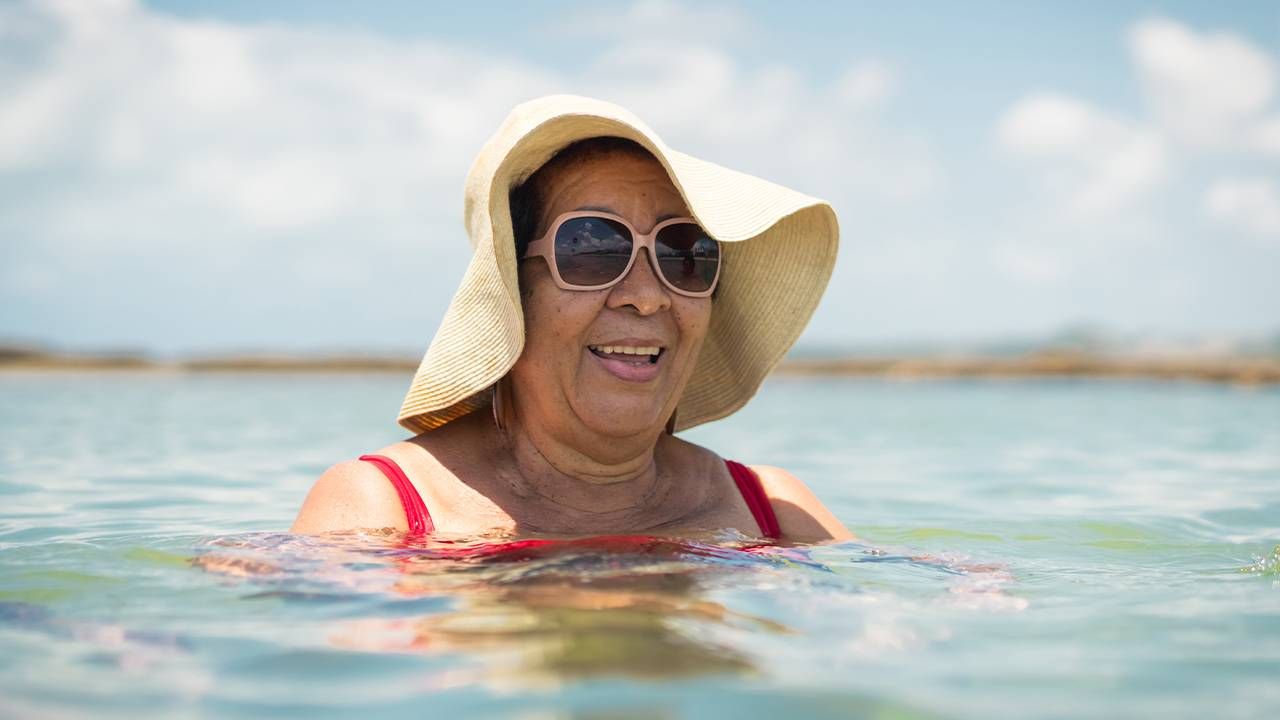The A, B, C, D and E of Skin Cancer Symptoms
It’s the most common form of cancer worldwide and when detected early, the survival rate is high
Despite wearing a wide brim hat and sunscreen on my daily morning walks, my dermatologist detected a basal cell carcinoma (BCC) about the size of a small freckle on my hairline. BCCs are the most common form of skin cancers.

The Skin Cancer Foundation cites about 3.6 million new cases of BCC in the U.S. each year. The second most common form is squamous cell carcinoma (SCC) with an estimated 1.8 million cases diagnosed annually in the U.S. Two other types of skin cancer include melanoma, which resembles a mole, and Merkel cell carcinoma, which appear as firm, painless lesions on the skin. It's a rare and aggressive skin cancer.
"The risk of melanoma increases as we age."
When I got my diagnosis, I erroneously thought it was a mistake. Wouldn't the sunscreen, my hat and thick curly hair covering the area make it impossible for a BCC to form in that part of my head?
Obviously, the answer is "no."
"That's because it's cumulative," says Dr. Cindy Wassef, assistant professor and residency program director at Rutgers Center for Dermatology in New Jersey. "Wearing a wide brim hat and sunscreen with SPF (Sun Protection Factor) of thirty or higher counts. However, the cumulative effect of walking your dog every day, gardening for twenty minutes a few times a week, or taking out the trash without wearing sunscreen or a hat is exposure to the sun. It's small increments that add up."
For those of us who spent our childhood summers lying on the beach or beside a pool in the sun trying to go from pasty white to glorious bronze, we may pay the price. Back then, we didn't know about the sun's harmful rays.
"The risk of melanoma increases as we age," Wassef says. "The average age of people [who] are diagnosed is age 65. And melanoma occurs at all ages, even among those younger than age 30."
Skin Cancer Affects Everyone
Skin cancer is 20 times more common in white people than in Black people because there's less melanin in lighter skin, which makes it easier for ultra violet light to cause skin damage. Few statistics are available regarding people of color as noted in a 2020 paper highlighting the lack of diversity in scientific trials and studies.
Despite few studies on the subject, everyone needs to protect their skin while outdoors in the sun. Instances of melanoma include:
- 1 in 38 for white people
- 1 in 1,000 for Black people
- 1 in 167 for Latinos
- 2 to 4% in Asians
As they age, men have higher rates of melanomas than women and before the age of 50 those rates are higher among women.
Symptoms of Skin Cancer
It's important to take a look at any changes in your skin such as a new growth, a sore that doesn't heal, or changes in an old growth. Here is the A, B, C, D and E of melanoma:
- Asymmetrical: Does your mole or spot have an irregular shape with two parts that look different?
- Border: Look at the border of the mole or spot. Is it jagged? Is it bigger than a pencil eraser?
- Did the color change? Is the color uneven? Are there two or more colors in the growth?
- Diameter: Has the mole or spot grown?
- Evolving: Has your mole or spot changed within the last few weeks or months?
If you notice any of these changes, schedule an appointment with a skin doctor.
Protect Yourself From the Sun All Year Round
Before going outdoors, apply sunscreen to your face, neck, back of your neck, hands, arms, legs, feet, and any other exposed areas. Wassef recommends using sunscreen with an SPF of 30 or higher to protect against UVB and UVA rays.
"If you run or take walks, do it early in the morning or later in the evening when the sun isn't as strong."
"And apply sunscreen every 2 hours," she says. "I also recommend wearing UPFs (ultraviolet protection factor) clothing if you spend a lot of time outdoors."
Also known as wearable sunscreen, UPFs block out the sun's harmful rays. You can purchase UPF T-shirts, hats, shorts, and pants online and at some retail stores. UPF clothes have tighter weaves and mostly come in darker colors to block the sun.
"And, if possible, try to avoid being outside between 10 a.m. and 2 p.m.," Wassef says. "That's the hottest part of the day. If you run or take walks, do it early in the morning or later in the evening when the sun isn't as strong."
"Summer is when most of us think about skin cancer because we spend more time outdoors," Wassef says. "It's possible to get skin cancer in the winter, too. That's why everyone should wear sunscreen if they're going to be outdoors and schedule an annual visit to the dermatologist. If skin cancer is detected early, most procedures can be done in your dermatologist's office and the outcome is a high survival rate."
Genetics Play a Role
"Most skin cancers are caused by environmental factors," says Wassef. "Some skin cancers can be genetic."
The National Cancer Institute found genetics is linked to some types of skin cancer. "If there is a history of skin cancer in your family," Wassef says, "talk to a dermatologist."

